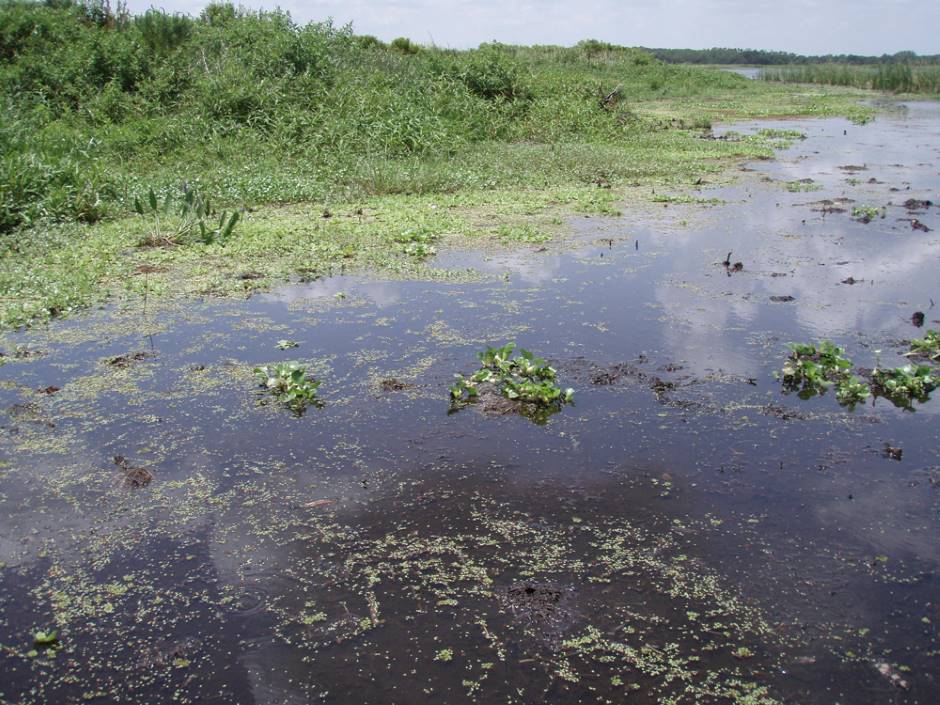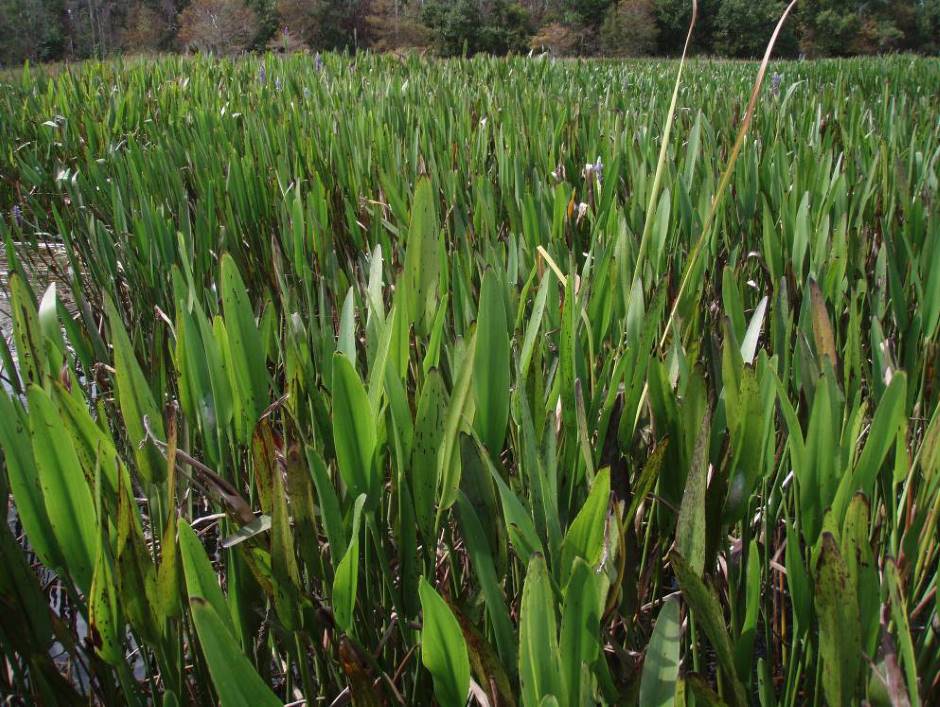Vegetation Biodiversity and Dissolved Oxygen in Aquatic Systems
 A tussock habitat — a floating island of dense plant growth (Credit: Aaron Bunch)
A tussock habitat — a floating island of dense plant growth (Credit: Aaron Bunch)Aquatic vegetation growth is important to the habitat suitability of various ecosystems, and while healthy flora are fundamental to the ecological chain, overgrowth can introduce a host of problems for fish. High-productivity systems, or eutrophic systems, mean a surplus of food available to microorganisms and herbivores, but the overgrowth is also tied to low-light conditions and hypoxia.
Studying Aquatic Vegetation Overgrowth
Both of these can lead to major problems for aquatic life, particularly those that require higher oxygen levels to survive. Fish like bass and crappie are of particular interest to fishery managers as these species attract anglers but can also be good indicators of water quality.
In 2006 and 2007, Aaron Bunch dredged through dense stands of pickerelweed, cattails, and other emergent species in lakes Kissimmee and Istokpoga for some of the hardest fieldwork of his career.
“We’re talking about knee-to-waist deep thick detritus muck,” Bunch said. “You often see alligators all around you. That’s just the norm. You get comfortable with the wildlife out there.”
Bunch, a graduate research assistant at the University of Florida’s School of Forest Resources and Conservation at the time, was in that mess to gather data on water quality and fish diversity. The resulting studies, one of which was published in the journal Lake and Reservoir Management, showed a clear pattern. The denser the plants, the lower the dissolved oxygen—and the lower the dissolved oxygen, the fewer the sport fish species.
One of the concerns surrounding invasive vegetative species is the possibility of them overwhelming the native life and becoming the dominant species in the systems. Native plant life can also grow out of control, threatening local biodiversity if not properly regulated. For fishery managers, this simply means that their plans must include vegetation.
There are several strategies that managers can use to control vegetative growth. While herbicide may be a popular choice in invasive species management, the treatment is not free of consequences. Chemical treatments leave dead plants behind, where they’ll decay and continue to deplete dissolved oxygen.
Alternatively, machinery that specifically removes the plants can be used. After removal, the plant material is then either piled up on the shorelines or hauled away by the truckload.
Bunch elaborated, “You have these giant mechanical contraptions that go through and actually chop out these areas.” He continued, “It’s a large-scale operation to remove all this biomass from these lakes.”
Regardless of the means, Bunch explained, “It’s important to have a complex mosaic of plants with lots of edge habitat.”
How Vegetation Influences Dissolved Oxygen in Aquatic Systems
The dense, single-species stands are an issue in lakes with stabilized levels brought on by water regulation in the state. These are shallow floodplain lakes that once experienced natural flood cycles that would occasionally sweep through, kill off plants and perform a little housekeeping by moving plants and other organic material up onto the landscape. Without those floods, the plants grow unabated while organic matter builds up below, decaying in a microbial process that sucks up dissolved oxygen.
“These lakes are stabilized, so there’s really no period of time where the floodplain is inundated and the plants die off,” Bunch said.
One solution Bunch proposes is breaking up concentrations of single species and creating edge habitats for fish like bass while also opening up the nearshore habitats to open water. With thinner, healthy plant growth, water can circulate amongst the plant life, ideally freshening things up and boosting dissolved oxygen levels.
Conclusion
While the denser plant growth can be harmful to fish that need higher oxygen levels, other locals, like birds, amphibians, and reptiles, see areas of thick plant growth as suitable habitats. So resource managers have to balance angler desires with ecosystem needs.




0 comments